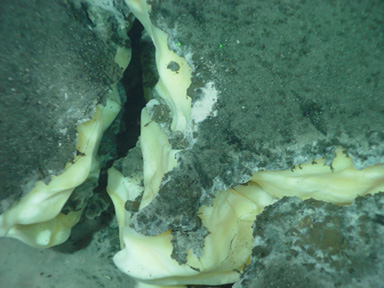
Geotimes Home | AGI Home | Information Services | Geoscience Education | Public Policy | Programs | Publications | Careers

 A two-year search
that culminated in August with the discovery of one of Canada’s largest deposits
of methane hydrates began with a fisherman off the coast of British Columbia.
A two-year search
that culminated in August with the discovery of one of Canada’s largest deposits
of methane hydrates began with a fisherman off the coast of British Columbia.Naomi Lubick
Geotimes contributing writer
 |
Geotimes Home | AGI Home | Information Services | Geoscience Education | Public Policy | Programs | Publications | Careers |